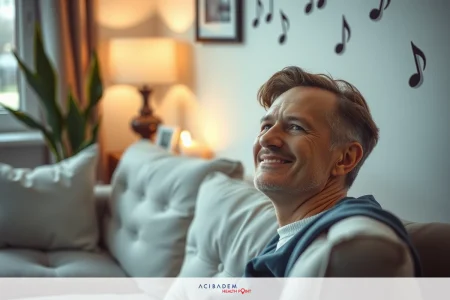How to Recognize Rhinoplasty
How to Recognize Rhinoplasty Rhinoplasty, a term that might sound complex, is simply the medical terminology for what many refer to as a nose job. It’s an aesthetic option chosen by individuals who wish to alter the shape or size of their noses. Not always obvious at first glance, there are certain signs that may hint towards someone having undergone this cosmetic change.
Spotting these changes requires keen observation and some knowledge about pre and post-surgery physical characteristics. Factors like symmetry, nostril shape and overall harmony with other facial features can be indicators of rhinoplasty. Consulting your insurance company before deciding on such procedures can help you better understand coverage policies specific to your plan.
Common Signs and Symptoms
Rhinoplasty, also known as nose surgery, is a cosmetic procedure that alters the shape or size of the nose. Recognizing whether someone has undergone rhinoplasty can be challenging without understanding its common signs and symptoms. Interestingly enough, some of these signals are not directly related to the physical aspect but more towards post-operation conditions.
Firstly, those who have just had rhinoplasty may show obvious signs such as bruising around their eyes or swelling on their nose. These effects often last for several weeks following the operation. However, over time as healing progresses, these conspicuous symptoms gradually diminish leaving behind subtler clues to identification.
In terms of physical changes in appearance post-rhinoplasty, there could be discernible alterations in the symmetry and structure of the individual’s nose. The nostrils might appear more even; bumps that were once present on the bridge could now be absent giving way to a smoother contour; drastic shifts in size – either reduction or augmentation – are also possible indicators depending upon what was desired from this cosmetic procedure.
However subtle they may seem initially; these modifications become apparent when compared with earlier photos pre-surgery. It’s worth noting here that while recognizing someone who has undergone rhinoplasty based solely on visual cues is feasible it requires an observant eye well-versed with normal nasal anatomy versus surgically enhanced features.
Secondly, true recognition goes beyond mere visual cues; it extends into understanding behavioural patterns too! Post-operative care after a rhinoplasty involves certain restrictions including avoiding strenuous activities which can elevate blood pressure thereby risking bleeding at surgical sites; refraining from blowing one’s nose due to potential disruption caused within delicate nasal structures still healing internally etcetera.
Hence if you notice people close around you suddenly being extra cautious about protecting their noses during routine tasks like dressing up (to prevent accidentally hitting), maintaining an unusually upright position while sleeping (to minimize swelling), or limiting their social engagements for a few weeks – they might be in the recovery phase following a rhinoplasty!
Lastly, remember that every individual’s journey to healing post-rhinoplasty is unique. Hence, variations in signs and symptoms are possible based on personal factors like age, overall health status and even surgeon’s expertise. Thus identifying someone who has had rhinoplasty should not be seen as an exact science but more of an educated guess based on understanding its common signs and symptoms coupled with keen observation.
Physical Changes to Look For
When it comes to recognizing rhinoplasty, understanding the potential physical changes in the nose is crucial. The alterations brought about by this cosmetic procedure can be subtle or quite noticeable depending on several factors such as the extent of reshaping done and individual healing processes. Let’s identify some common physical transformations that could hint at someone having undergone rhinoplasty.
Change in Size: One of the most obvious signs of rhinoplasty is a significant change in size. This could manifest as a reduction for those who found their original nose too prominent or an increase for individuals seeking enhancement.
Altered Shape: A person might opt for rhinoplasty to modify specific areas like removing humps on the bridge or refining nasal tips which were previously bulbous – resulting in a different overall shape.
Improved Symmetry: Rhinoplasties often aim at improving symmetry between both halves of the nose. Post-surgery, one might notice more aligned nostrils or uniformity across sides which wasn’t there before.
Smoothing Out Irregularities: Pre-existing irregularities such as depressions or bumps may no longer exist post-rhinoplasty. Smoothness and evenness become evident markers of surgical intervention.
Revised Angle: The angle between the base of the nose and upper lip can also be adjusted during surgery leading to an altered facial profile viewable from side angles primarily.
Taking into account these indicative physical changes can aid significantly in identifying if someone has had a rhinoplasty procedure. However, remember that each person’s results are unique due to individual anatomical variations coupled with surgeon’s skills – hence not every sign will apply universally!
How to Recognize Rhinoplasty
Frequently Asked Questions
What is rhinoplasty?
How can I tell if someone has had rhinoplasty?
Recognizing if someone has undergone rhinoplasty involves keen observation and understanding common signs post-surgery. These include physical changes like alterations in size, shape and symmetry of the nose; smoother contours replacing previous irregularities; and behavioral clues such as being overly cautious about protecting their noses during routine tasks among others.
Will my insurance cover for rhinoplasty?
This largely depends on your specific insurance policy and whether the surgery is performed for cosmetic reasons or medical necessity (like correcting breathing problems). Consulting with your insurance company directly will give you precise information regarding coverage possibilities.
Are there any immediate signs after surgery?
Yes, individuals who have just undergone rhinoplasty may show visible signs such as bruising around their eyes or swelling on their nose but these gradually diminish over time.












